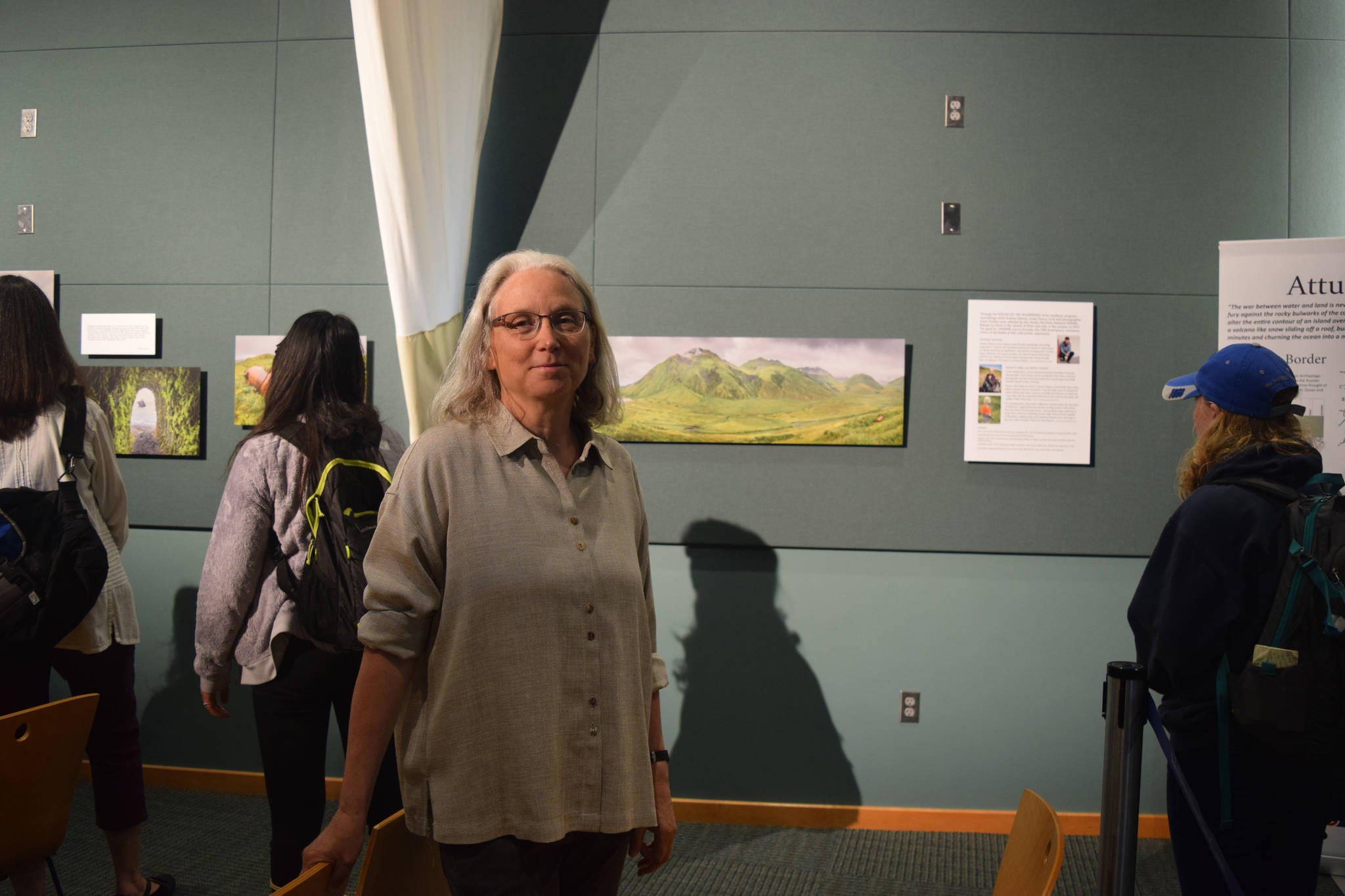Editor’s note: This article has been updated to correct the amount of time it took the artists to reach the Attu and Kiska Islands.
There is a windblown island at the far end of the Aleutians, rainswept and empty. Cormorants and murrelets build tiny nests on the island’s cliffs as gale waters and winds batter up from the sea. No one visits.
Battle remnants decay in fields of nettle. Caves carved into stone by cold, wet soldiers stand empty and dripping with moss, their enclaves no longer protecting shivering men from bombs. Hulking shells of airplanes the color of burnt sienna lie in fields eroded by wind and rain.
This year marks 75 years since the Battle of Attu, which was the only ground battle of World War II fought on American soil. Today, Attu Island speaks messages of wreckage and loss amidst a landscape of wild beauty.
The Alaska National Maritime Wildlife Refuge manages Attu, the island at the far end of the Aleutian chain. As part of the commemoration of the 75th anniversary of the Battle of Attu, three artists, Nancy Lord of Homer, Andrea Nelson of Haines and Irene Owsley of New Mexico, visited Attu and Kiska Islands as part of the annual Voices of the Wilderness Artist-in-Residence program.
“The Voices of the Wilderness Artist-in-Residence program was an incredible opportunity. I never would have got the chance to visit Attu,” Lord said.
Artists-in-residence accompany refuge staff and help interpret public lands in creative ways. The hoped-for result is artwork that communicates something of the meaning of these lands.
“Art is another way to tell stories,” said Steve Delahante, manager of the Alaska Maritime National Wildlife Refuge, while introducing the First Friday opening at the refuge on July 6. “When doing research for Attu’s 75th anniversary, I came across a Rachel Carson quote. She said that it’s not half so important to know, as to feel. I think artists help us feel the experience, not just know it.”
Artists have always been wanted in parks, from the very first American landscape painters who brought the sheer beauty of Yosemite Falls and the stark aridity of the Sonoran deserts to many eyes. As Barry Lopez said, for some people, what they are is not finished at the confines of the body, but continues with the reach of the senses out into the land.
For artists, the task is to put an ear to the whispering of pines and the slopping of barnacles, to listen, deeply, and to come back and report what they feel.
In June 2017, after a 38-hour journey aboard the research vessel Tiglax, the artists made it out to the remote islands. Traces of technology and battle pepper the island’s otherwise gently rolling tundra.
Lord writes: “Once-trees from another shore stand-in formation, salt-pickled, fog-softened, caressed by the ceaselessly moving sea. What ships once rested against them? What fuel barrels, artillery shells, cans of meat, woolen socks, adrenaline-filled boys were unloaded here, delivered onto mucked-up tundra?”
Lord wrote captions to accompany Owsley’s panoramic landscape photos, both reflecting on the meaning of Attu’s aesthetic. Lord used haiku to illustrate her impressions of the island. A Japanese form, haiku is traditionally used to evoke a mood in nature.
Fading into a softened tranquility
What time and weather have made
Of what remains
“What Remains” was the theme of the Reflections of Attu project. Witnessing what is left of battle on a remote island, Lord wrote:
Tiny submarine
Shot up, blown up, still here
Relic in the snow
The Attu battle raises questions of what should be memorialized, of which actions to be proud and of which to be ashamed. Now we think differently about the resettlement of Attu’s indigenous culture to internment camps during the war. Now we create ceremonies of reparation and recognition for the formerly voiceless. The past is rewritten in the present.
This is one of the purposes of the artist — to take ideas off the shelf, dust them off, and reexamine them.
“I think Attu causes us to examine ideas about loss, and beauty,” Lord said.
The wreckage and debris, contrasted with the innocence of nettles and lightly lavender wildflowers, makes decaying war machines all the more stark on this gently remote island populated only by a few migrating birds. Owsley captures this starkness in her photographs. Accompanied by Lord’s writing, the photos show panoramas of green, sea caves and hulking metal.
As Lord said, the impression of what remains after battle is one of “the two mighty forces. Human might and nature; rugged and indifferent.”
Mountains rise and fall
Look closely at what remains
An abiding land.
…..
Jennifer Tarnacki is a freelance writer living in Homer.


